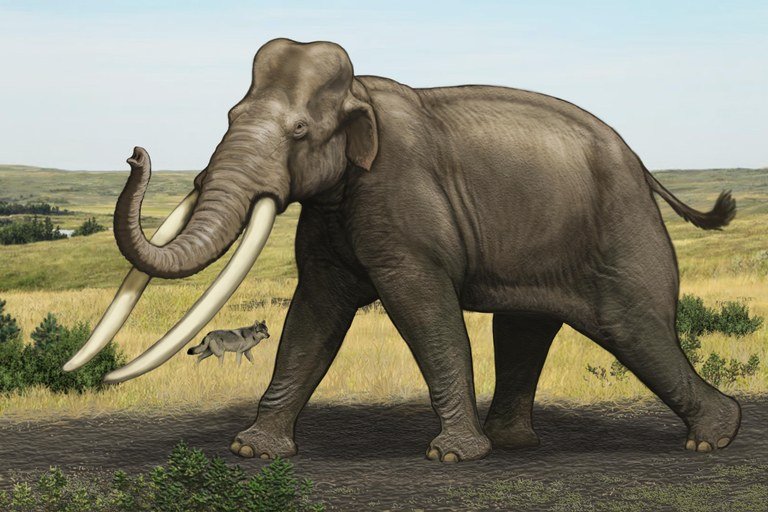Whole genomes reveal messy history of promiscuous proboscideans
A new collaboration between researchers at the McMaster Ancient DNA Centre and international researchers from across the United States, Europe, and Australia has resulted in the most comprehensive study of elephant evolution to-date.
Feb 27, 2018
The findings, published yesterday in the Proceedings of the National Academy of Sciences, revealed that the evolution of the Proboscidea (the Taxonomic order containing all living and extinct elephants and mastodons) was messy with high degrees of interbreeding between different elephant and mammoth species. The paper also reports 14 new whole nuclear genomes, including the first ever complete genomes of the Columbian Mammoth (Mammuthus columbi) and the American Mastodon (Mammut americanum).
Authors: Eleftheria Palkopoulou, Mark Lipson, Swapan Mallick, Svend Nielsen, Nadin Rohland, Sina Baleka, Emil Karpinski, Atma M. Ivancevic, Thu-Hien To, R. Daniel Kortschak, Joy M. Raison, Zhipeng Qu, Tat-Jun Chin, Kurt W. Alt, Stefan Claesson, Love Dalén, Ross D. E. MacPhee, Harald Meller, Alfred L. Roca, Oliver A. Ryder, David Heiman, Sarah Young, Matthew Breen, Christina Williams, Bronwen L. Aken, Magali Ruffier, Elinor Karlsson, Jeremy Johnson, Federica Di Palma, Jessica Alfoldi, David L. Adelson, Thomas Mailund, Kasper Munch, Kerstin Lindblad-Toh, Michael Hofreiter, Hendrik Poinar, and David Reich
PNAS, Feb. 2018, DOI: https://doi.org/10.1073/pnas.1720554115
Abstract
Elephantids are the world’s most iconic megafaunal family, yet there is no comprehensive genomic assessment of their relationships. We report a total of 14 genomes, including 2 from the American mastodon, which is an extinct elephantid relative, and 12 spanning all three extant and three extinct elephantid species including an ∼120,000-y-old straight-tusked elephant, a Columbian mammoth, and woolly mammoths. Earlier genetic studies modeled elephantid evolution via simple bifurcating trees, but here we show that interspecies hybridization has been a recurrent feature of elephantid evolution. We found that the genetic makeup of the straight-tusked elephant, previously placed as a sister group to African forest elephants based on lower coverage data, in fact comprises three major components. Most of the straight-tusked elephant’s ancestry derives from a lineage related to the ancestor of African elephants while its remaining ancestry consists of a large contribution from a lineage related to forest elephants and another related to mammoths. Columbian and woolly mammoths also showed evidence of interbreeding, likely following a latitudinal cline across North America. While hybridization events have shaped elephantid history in profound ways, isolation also appears to have played an important role. Our data reveal nearly complete isolation between the ancestors of the African forest and savanna elephants for ∼500,000 y, providing compelling justification for the conservation of forest and savanna elephants as separate species.
Surrounding Press Stories:
- Investigating the Evolution of Elephants – Daily Planet
- Ancient Elephants and Mastodons Were Totally Down With Inter-Species Boning – Gizmodo
- Modern elephant species genetically distinct, though ancient ancestors interbred – CTV News
- How the sex habits of mammoths and mastodons could help save modern elephants – CBC
- Mammoth Data: Researchers Sequence Complete Genomes of Extinct and Living Elephants Pointing to Highly Complex Relationships, Rich Evolutionary History - Newswise
- Complete genomes of extinct and living elephants sequenced – Science Daily

Illustration of a Palaeoloxodon by Carl Buell.

Graduate student Emil Karpinski holds a tibial cross section from a Siberian Woolly Mammoth. This permafrost preserved sample still contains fat entombed marrow. Credit: JD Howell, McMaster University.

Graduate student Emil Karpinski in the Sample Prep Room of the McMaster Ancient DNA Centre Clean Labs. Credit: JD Howell, McMaster University